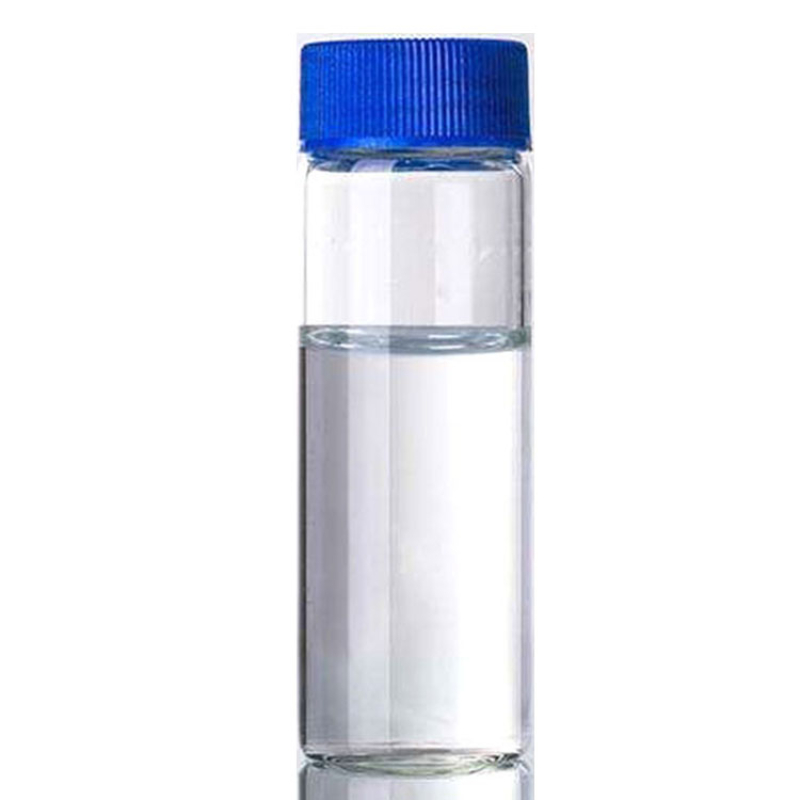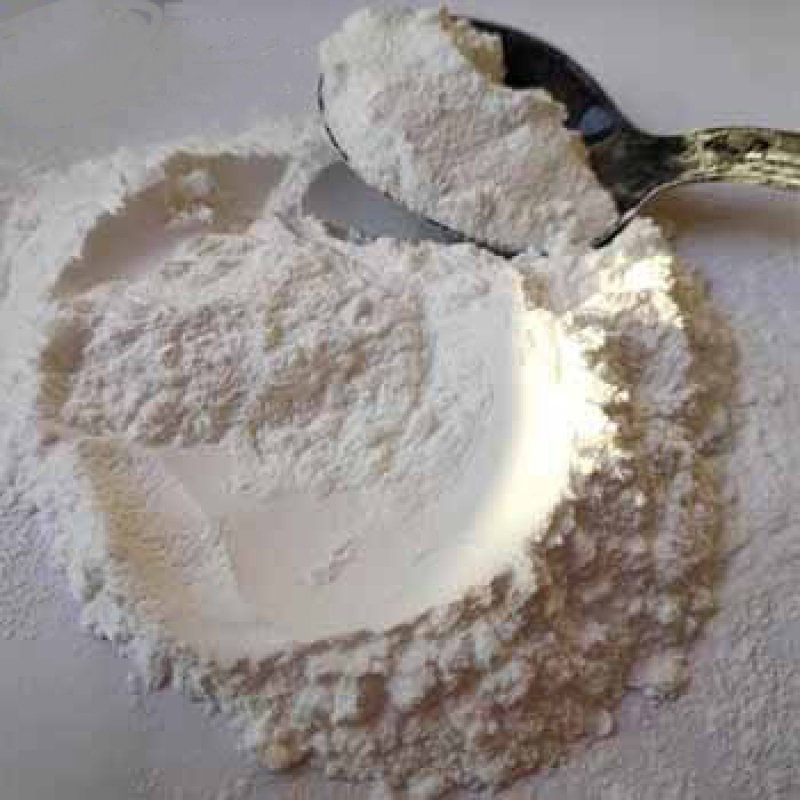Products Description of Copper(II) sulfate pentahydrate CAS#7758-99-8Copper sulfate pentahydrate (chemical formula: CuSO4·5H2O) is blue vitriol, blue triclinic crystal, easy to weather in dry air, lose 4 molecules of crystal water when heated to 190℃, and become anhydrous salt at 258℃. Toxic. Soluble in water, insoluble in ethanol. Can be used for pesticides, harmful if swallowed, irritating eyes and skin, and can have long-term adverse effects on the aquatic environment.Copper sulfate crystals are beautiful blue crystals in plate or short columnar shape with a beautiful blue color.
Contact Now
Products Description of Orthoboric acidCAS#10043-35-3Boric acid is a crystalline compound formed by boron trioxide dissolving in water. It is an inorganic acid, mainly tetraboric acid H2B4O7 (also known as pyroboric acid), metaboric acid (HBO2)n and orthoboric acid H3BO3 (also known as orthoboric acid). Among them, orthoboric acid has the highest water content and is the most stable. Orthoboric acid, also known as boric acid for short, has the appearance of white powdery crystals or flaky crystals with three oblique axes and is shiny. It has a slight bitter taste.
Contact Now
Antioxidant 1035 Chemical PropertiesMelting point 78 °CBoiling point 659.4±55.0 °C(Predicted)density 1.072±0.06 g/cm3(Predicted)storage temp. Sealed in dry,Room Temperaturesolubility DMSO (Slightly), Methanol (Slightly)form Solidpka12.02±0.40(Predicted)color White to Off-WhiteCAS DataBase Reference41484-35-9(CAS DataBase Reference)EPA Substance Registry SystemThiodi-2,1-ethanediyl bis[3,5-di-tert-butyl-4-hydroxyhydrocinnamate] (41484-35-9)Safety InformationRTECS DA8342500HS Code 2930.90.2900Factory and Equipment ShowFast delivery timeInventory 2-3 w
Contact Now
Products Description of Trimethyl orthopropionate CAS#24823-81-2Trimethyl orthopropionate is a chemical substance.Trimethyl orthopropionate Chemical PropertiesBoiling point 121-122 °C (lit.)density 0.944 g/mL at 20 °C (lit.)refractive index 1.397-1.399Fp 19 °Cstorage temp. Flammables areasolubility soluble in Chloroformform Liquidcolor Clear colorlessBRN 1736043CAS DataBase Reference24823-81-2(CAS DataBase Reference)NIST Chemistry ReferencePropane, 1,1,1-trimethoxy-(24823-81-2)Safety InformationHazard Codes Xi-F,Xi,FRisk Statements 36
Contact Now
Products Description of Saccharin CAS#81-07-2Pure saccharin is a non-toxic, non-caloric, non-nutritious sweetener that is not absorbed by the human body. Taking advantage of its sweet taste, it is used as a food additive to replace sugar. As a food additive, saccharin has no nutritional value to the human body except that it causes a sweet feeling in the taste buds and the sweetness of the taste can meet the requirements of consumers.
Contact Now
Products Description of Hexadecyl trimethyl ammonium bromide CAS#57-09-0Hexadecyltrimethylammonium bromide is white or light yellow crystals or powder, easily soluble in isopropanol, soluble in water, produces a lot of foam when shaken, and has good compatibility with cationic, nonionic, and amphoteric surfactants. It has excellent penetration, softening, emulsification, antistatic, biodegradability, and bactericidal properties.
Contact Now
Products Description of Hexadecyl trimethyl ammonium bromide CAS#57-09-0Hexadecyltrimethylammonium bromide is white or light yellow crystals or powder, easily soluble in isopropanol, soluble in water, produces a lot of foam when shaken, and has good compatibility with cationic, nonionic, and amphoteric surfactants. It has excellent penetration, softening, emulsification, antistatic, biodegradability, and bactericidal properties.
Contact Now
Glycerin CAS#56-81-5Introducing our usp 99.7% Glycerine, a high-purity glycerin that is renowned for its exceptional quality and versatility. With the chemical formula C3H8O3, our pure glycerin is a key component in a variety of industries, from cosmetics to food processing.
Contact Now
Product Description: USP 99.7% Glycerine (CAS# 56-81-5)Our premium USP 99.7% Glycerine (CAS# 56-81-5) is a high-purity, pharmaceutical-grade glycerine perfect for versatile applications across a variety of industries.
Contact Now
Glycerin For Skin CAS#56-81-5 discover the power of Glycerin (CAS#56-81-5), also known as vegetable glycerine or liquid glycerol, a key component in a wide array of industries.
Contact Now
Products Description of Glycerine CAS#56-81-5Glycerin is an important basic organic raw material. It is widely used in industry, medicine and daily life. Currently, it has about 1,700 uses. It is mainly used in medicine, cosmetics, alkyd resin, tobacco, food, Chemicalbook acid resin, and celluloid. and explosives, textile printing and dyeing, etc. Glycerol consumption in areas such as alkyd resins, celluloids and explosives is on a downward trend. However, its applications in medicine, cosmetics, and food will continue to grow. It can form a nutrient source after hydrolysis in the body.
Contact Now
Products Description of Antioxidant 168 CAS#31570-04-4Antioxidant 168 is a phosphite antioxidant with excellent performance. It has strong extraction resistance, is stable against hydrolysis, and can significantly improve the light stability of products. It can be used in combination with a variety of phenolic antioxidants. . For example, Cyanox2777 developed by the American company Cyanamid is a compound of antioxidant 168 and phenolic antioxidant 1790. The combined use of phosphite and phenolic antioxidants can give full play to the synergistic effect.
Contact Now
Products Description of Tetrabutylammonium hydrogen sulfate CAS#32503-27-8Tetrabutyl quaternary ammonium salts are phase transfer catalysts with superior performance. Tetrabutylammonium hydrogen sulfate buffer salt system is often used as an aqueous mobile phase in reversed-phase liquid chromatography detection. However, the stability of the tetrabutylammonium hydrogen sulfate buffer salt system gradually decreases with the increase of tetrabutylammonium hydrogen sulfate concentration.
Contact Now
Products Description of 1-Ethylpiperazine CAS#5308-25-8N-Ethylpiperazine (EPA) is one of the piperazine derivatives. As a pharmaceutical intermediate and fine chemical, it is widely used in pharmaceutical and organic synthesis. It is mainly used to synthesize ethyl ciprofloxacin antibiotics. It is also used as a synthetic raw material for dyes and plant protection agents. It is also widely used in fungicides and surfactants.
Contact Now
Products Description of Cyclohexanone 99.8%MIN CAS#108-94-1Cyclohexanone is an organic compound with the chemical formula C6H10O. It is a saturated cyclic ketone with a carbonyl carbon atom included in a six-membered ring. A colorless, clear liquid with an earthy odor and, when containing trace amounts of phenol, a minty odor. The impurities are light yellow and develop color as impurities are generated over the storage time. They are watery white to grayish yellow and have a strong pungent odor. When mixed with air the explosive pole is the same as an open chain saturated ketone.
Contact Now
Products Description of (-)-(R)-Mandelic Acid CAS#611-71-2D-mandelic acid is a polar molecule. Because it contains hydroxyl and carboxyl groups, the molecule has a certain degree of hydrophilicity. Since D-mandelic acid is a chiral molecule, its physical and chemical properties are affected by the stereostructure of its molecule. In addition, the acid-base properties of D-mandelic acid are also affected by the molecular structure.
Contact Now
Products Description of PolycaprolactoneCAS#24980-41-4Polycaprolactone (PCL) is a semi-crystalline polymer and a chemically synthesized biodegradable high molecular material. Its structural repeating unit contains 5 non-polar methylene groups - CH2.
Contact Now
Products Description of Poly(L-lysine hydrobromide) CAS#25988-63-0Antioxidants, Chelating Agents, PreservativesPoly(L-lysine hydrobromide) Chemical Propertiesstorage temp. 2-8°Cform lyophilized powderStability:Stable. Incompatible with strong acids, strong bases. Safety InformationWGK Germany 3F 3-10Product Application of Poly(L-lysine hydrobromide) CAS#25988-63-0Only a trace amount of polylysine needs to be added to food to be effective, and it will not affect the taste of the food. It can be used as a natural preservative for food.
Contact Now
Products Description of 1,3-Propanediol CAS#504-63-21,3-Propanediol (PDO) is mainly used to produce a new type of polyester, polytrimethylene terephthalate (PTT).
Contact Now
Products Description of 2,5-Dimethyl-2,4-Hexadiene CAS#764-13-62,5-Dimethyl-2,4-hexadiene is a chemical,Insoluble in water, soluble in alcohol and ether.2,5-Dimethyl-2,4-hexadiene Chemical PropertiesMelting point 12 °CBoiling point 132134°Cdensity 0.773 g/mL at 25 °C(lit.)vapor density 3.8 (vs air)vapor pressure 26.9 mm Hg ( 37.7 °C)refractive index n20/D 1.476(lit.)Fp 85 °Fstorage temp. Flammables areasolubility Chloroform, Ethyl Acetateform Oilcolor Clear ColourlessBRN 1733342LogP3.500CAS DataBase Refer
Contact Now
Products Description of Thiotriazolin CAS#357172-63-5Colorless liquidFactory and Equipment ShowFast delivery timeInventory 2-3 working days New production 7-10 working days
Contact Now
Products Description of Silver acetate CAS#563-63-3Silver acetate is an off-white solid powder at room temperature and pressure. It has average solubility in water. 1L of water can dissolve about 10.2g of silver acetate. It has good solubility in organic solvents such as ethanol, methanol and acetone.
Contact Now
Products Description of 2,4-Bis(phenylsulfonyl)phenol CAS#177325-75-6White powder2,4-Bis(phenylsulfonyl)phenol Chemical PropertiesMelting point 158 °CBoiling point 631.4±50.0 °C(Predicted)density 1.415±0.06 g/cm3(Predicted)pka4.17±0.43(Predicted)form powder to crystalcolor White to Almost whiteCAS DataBase Reference177325-75-6Factory and Equipment ShowFast delivery timeInventory 2-3 working days New production 7-10 working days
Contact Now
Products Description of 2,6-Di-tert-butylphenol CAS#128-39-2White or light yellow crystalline solid with phenol odor. Easily soluble in organic solvents such as alcohols, esters, alkanes, aromatic hydrocarbons, and almost insoluble in water.
Contact Now

































